意大利波焦帝国堡垒新公园
意大利波焦帝国堡垒新公园
A new park for the poggio imperiale
这个古老的中世纪堡垒坐落于12世纪消失的波焦伯尼佐(Poggio Bonizio)镇上。如今这片被农业区包围的考古勘测区域周边种满了葡萄藤与橄榄树,位于波吉邦西(Poggibonsi)小镇的丘陵上。这座堡垒是同卢凯塞(San Lucchese)会堂一同在公元3世纪早期根据古典制式修建的,由波焦伯尼佐捐赠给阿西西的弗朗西斯。这里一直位于波焦帝国的美第奇城堡墙外,于1488年至1511年由桑加罗(Giuliano da Sangallo)在洛伦佐(Lorenzo il Magnifico)的指导下为佛罗伦萨城而建的,当时建设的主要目的是便于守住阵地,防止锡耶纳人的侵袭。
由于多年的荒废和疏于管理,如今这个地方几乎与周边环境混为一体,但由于建筑结构牢固,耐受力较好仍被公众关注,所以堡垒依旧能较完好的保留下来。除了拐角的接缝处是石制的以外,该堡垒主要由砖砌成的。墙洞里有一条地道用来探听与敌方有关的信息。
堡垒的占地面积较大,却从未用于军事用途,并且一直没有在波吉邦西和瓦尔德尔萨地区的历史事件中出现。尽管如此,种种迹象表明它仍然是一个重要的综合设施。

1 意大利波焦堡垒的现状平面图View from the air before intervention
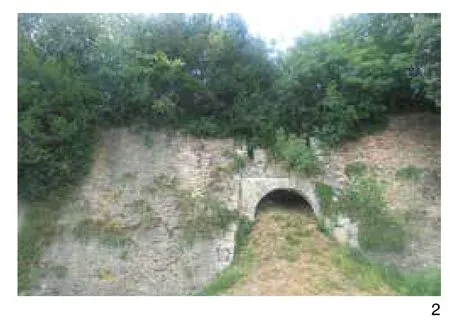
2 被土壤掩埋的墙门A gate of the wall buried by earth

3 城墙上荒弃的小路An abandoned path over the walls

4 修复后的城门A gate after restoration
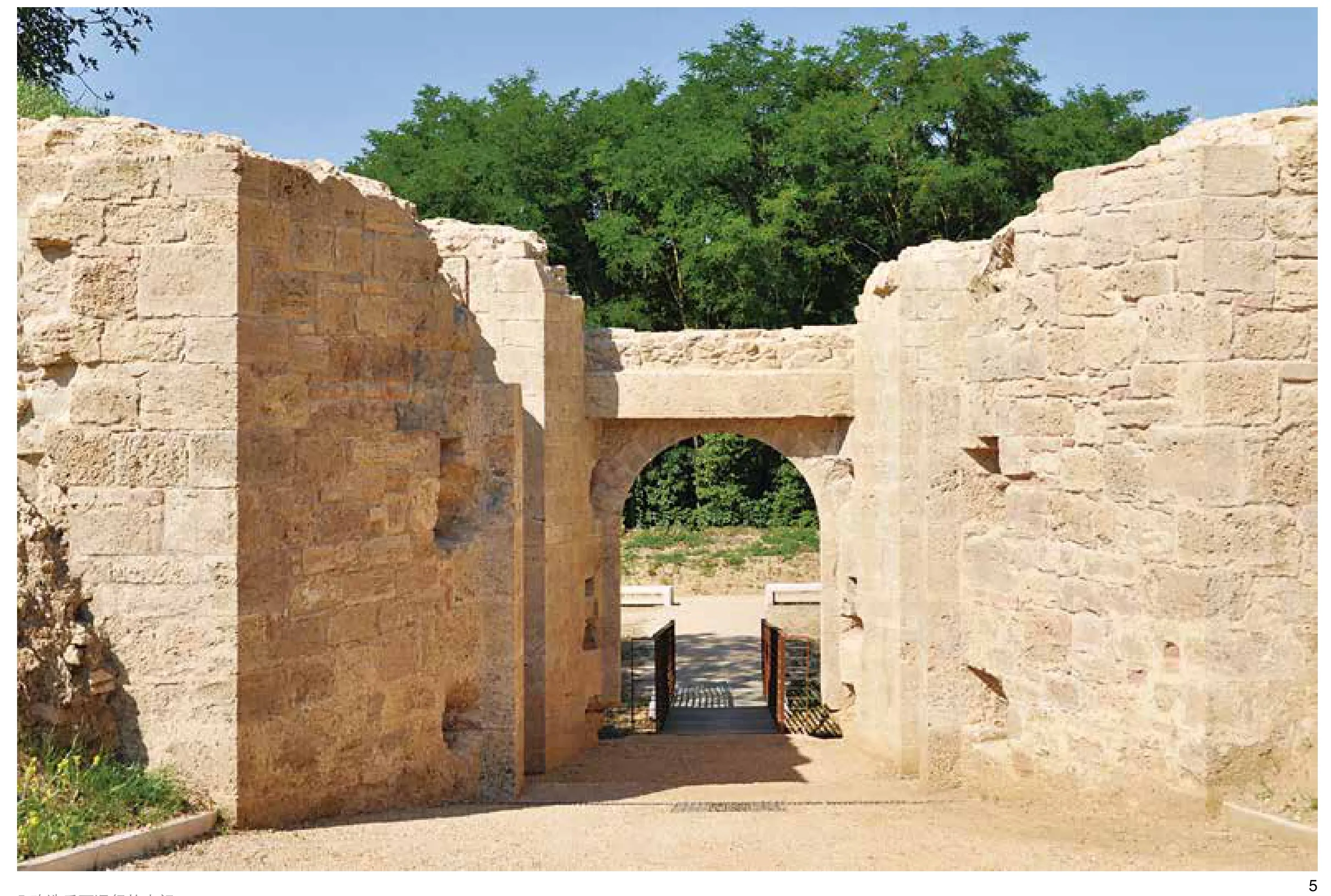
5 改造后可通行的大门A gate made accessible
15世纪从未有意大利中心城市的都市产业具有这种庄严宏伟的特点,它不想仅仅行使它堡垒的功能,而是希望以此作为建立新城市的基础。托斯卡纳的农业景观创造了一种用制造容器的方法建立保护屏障的奇迹,但在历史上首次出现之后就一直被搁置。这是一个多边形的堡垒防御工事,大量的钢板伫立在丘陵的东面,一道在侧断开的环形城墙。
锡耶纳大学的考古学院和英国园林设计师杰米•布坎南(Jamie Buchanan)合作进行总体规划的准备工作。实际上,在2003年波吉邦西市已经起草了整个环形外墙的修复、园路的设置和堡垒周边公共用地绿化的初步方案。由于城市可持续发展综合计划的制定,该项目最终在2013年投标成功,与Edil.Co Srl联合公司签订了中标合同。项目将由一个综合技术团队起草公园的详细设计方案,由费拉拉(Ferrara)公司进行景观设计,由Spira srl对遗留的历史建筑进行修复。
1 在城墙上诞生的特殊生态系统
如果阔特德克(Quarterdeck)是一个真正完工的军事建筑,那么伫立在石灰岩山丘斜坡上壮观的砖砌堡垒,为农业景观和要塞建立了一种特殊的联系。现存的树木呈带状在城墙上自由生长蔓延。然而在有些情况下,植物的根系会对建筑保护造成一定的困扰。但是从另一个角度看,这个长达1km的绿带生长在城墙的顶部具有重要的生态意义。这不仅可被视为缓解土地退化的重要步骤,也是发挥现有资源积极作用的有效方式。从城市发展的角度来说,这是波焦帝国堡垒新公园必不可少的因素。其中包含很多常绿灌木(桃金娘、迷迭香、月桂、荚蒾等),栎属植物是优势树种(岩生栎、冬青树),两侧多是补充树种(南欧朴、花白蜡、英国榆、无花果、小叶榆)。
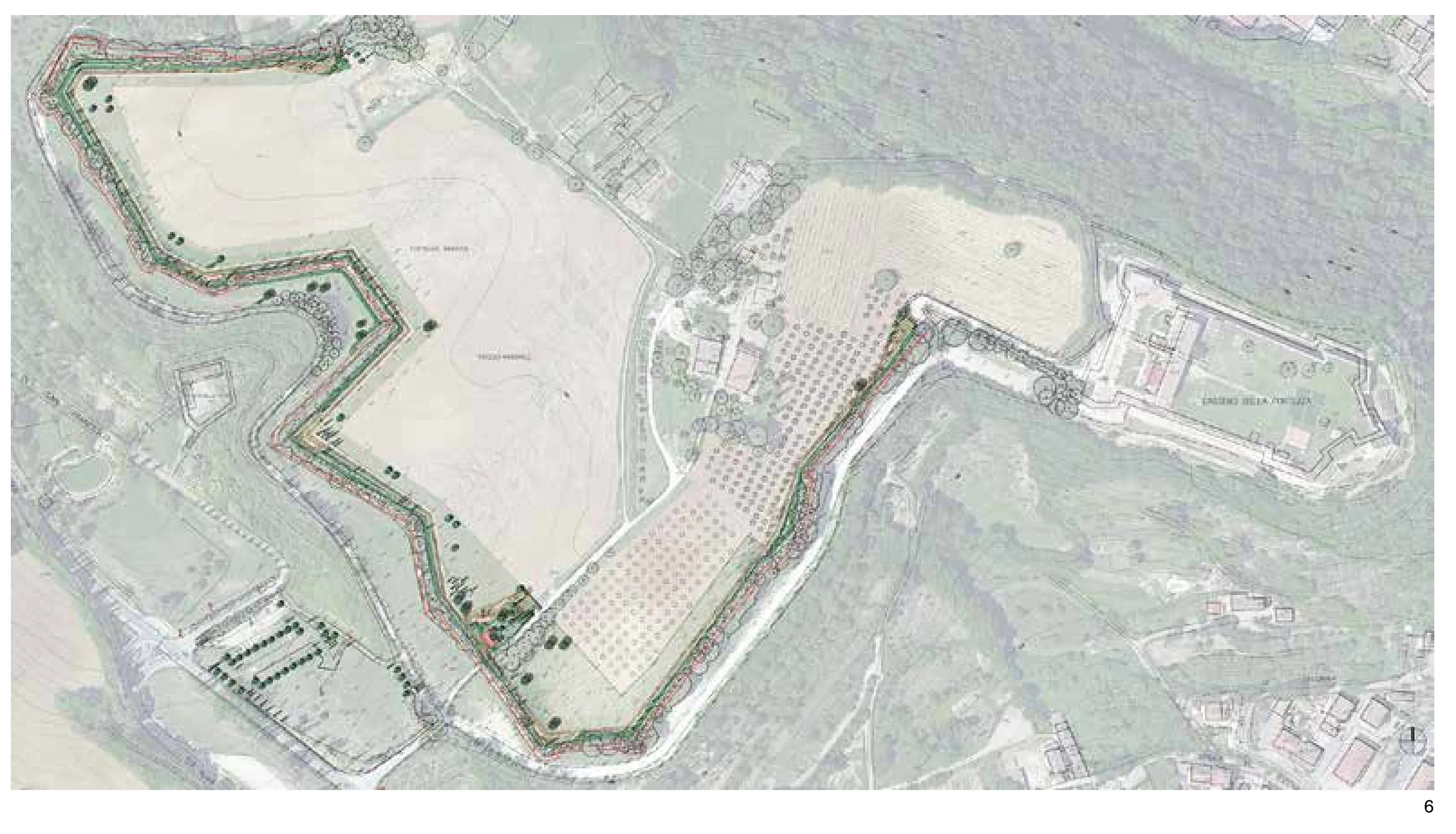
6 城墙上的园路体系平面图General layout of the path on the walls
相比于项目所在区域,岩生栎更多生长于潮湿肥沃的土壤,与其完全迥异的植物种类组成群落,但近期的气候变化对此产生了更进一步的威胁。
南欧朴(Celtis australis)是一种分布广泛的树种,但是它更集中地分布在山坡上和落叶植被区。因此,在特定区域之外很难发现大量南欧朴的存在。
Lauretum这个特有的物种在灌木层中占据了主导地位,在群落结构上与通常有两种树种占主导地位的环境状况不同。总之,我们面临着一种非常罕见的群落模式,因此对此区域的植被进行研究是至关重要的。
2 沿着城墙行走,重新打开古老的大门
从下方看,伫立的城墙沿着小路延伸而围合出草坪空间,其上可以进行户外演出活动;然而从上方看,部分城墙在一场耕地平衡运动中消失,没有城墙的区域被征收用作公园建设。
在因为安全因素被禁止进入、垃圾遍布场地而无法通行之前,此景观方案承担着使公园与周围耕地的结构紧密相连的作用,重新建立上方与下方的联系,重新激活大门和其他功能使这一切成为可能,运用这些措施使场地更便于人们使用。如今,一条园路沿着整个环形城墙铺设开来,沿路设置有公园设施与休息场所,一块块伫立的钢板一直延伸到波焦伯尼佐的考古勘测区域,随着旧门的翻新整修,上方和下方之间形成了一道环路,建立了有机的联系,赋予了堡垒新的活力。
上方的园路与墙体构成紧密的几何关系,形成尖拐角,勾勒出的多边形区域,几何状的结构突出了军事基地的典型特征。长凳、信息展板、柏树与橄榄树林以及条石长椅,为具有历史氛围的周围环境增添了一丝和谐的美感。为了实现这一方案,设计师重点改造了园路的入口空间,平行排列的竖钢板采用柯尔顿钢材(耐腐蚀钢的一种),以便能通过改造后的大门、特别的材料选择来重点突出入口空间。
沿着曲折的多边形园路设置了公共座椅区,可以俯瞰下方的城墙。这些区域勾勒出了可使用的空间范围,与下方的山麓形成直接的联系,远眺着周围的风景和圣卢凯塞修道院。
通过这些方法,此方案重点在历史建筑与周围壮丽农业风光的有效融合。换言之,新的公园将成为一个整合了部分托斯卡纳风光并重点强调历史遗留建筑的新结构。
项目地点:意大利锡耶纳市波吉邦西镇
委托方:波吉邦西市政府
承包商: 意大利阿尔塔姆拉镇Edil Co. Srl公司
设计方:Nicola Ferrara, Ferrara Associati Team
景观设计师:尼古拉•费拉拉、古丽亚娜•凯皮尼、圭多•费拉拉(费拉拉事务所团队)
其他设计团队: Spirasrl, GPA Ingegneriasrl, F. Fuzio, G. Mancini, F. Parotti
项目完工时间:2013年
公园开放日期:2015年6月6日
占地面积:5.6 hm2
工程造价:4 822 014.69 欧元
翻译:李雯
校对:王晞月
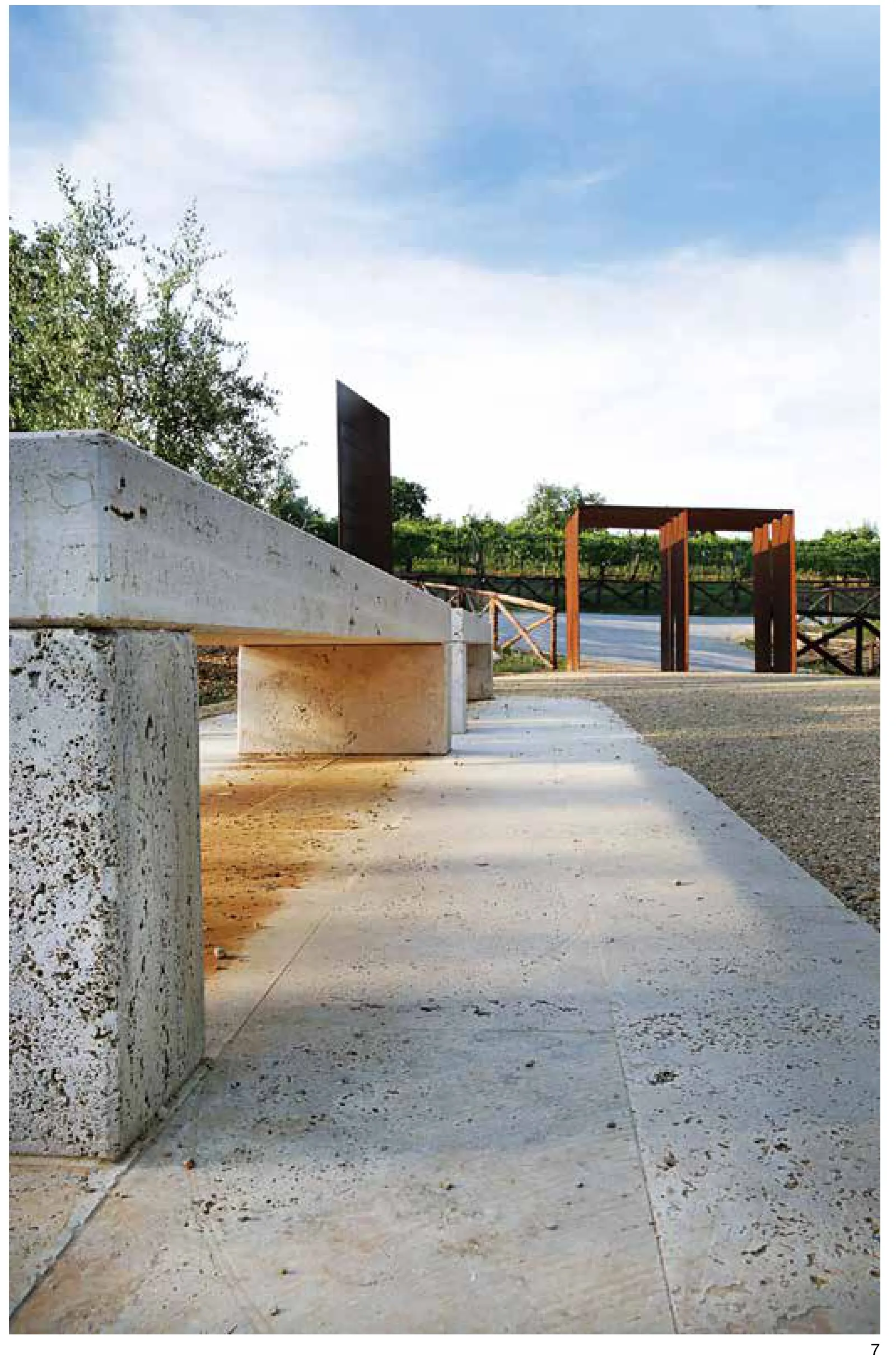
7 公园的新入口New access to the park

8 公园入口处的柯尔顿钢板Portals of Corten steel
The ancient medieval seat of the disappeared town of Poggio Bonizio of the twelfth century, today archaeological site in the heart of an agricultural area planted with vines and olive trees, is located in the hills above the town of Poggibonsi. Along with the basilica of San Lucchese, built in the early '200 and then, according to tradition, donated by the City of Poggio Bonizio to Francis of Assisi, the area is beyond the Medici fortress walls of Poggio Imperiale, built by Giuliano da Sangallo between 1488 and 1511 for the City of Florence under the direction of Lorenzo il Magni fi co, to face the war to the Siena Republic.
The years of abandonment and neglect have meant that today the work is almost entirely amalgamated with the surrounding landscape, but still in a good state of preservation, as proof of the strength and the care taken in its construction. The work is made mainly of bricks, with the exception of the corners of the seams for which was used the stone. The cavity of the walls has a gallery listening for enemy mines.
The fortress involves an impressive area, although it was never used for military purposes and since then - if not forgotten - remained absent from the historical events of Poggibonsi and Val d'Elsa district, although it is, in all evidence, a ofgreat signi fi cance complex.

9 打开的古堡大门Opening the ancient fortress door
No other urban enterprise undertaken in the fifteenth century in central Italy has the majestic features of this: the Poggio Imperiale he did not want to raise just a big fortress, but you wanted to start the foundation of a new city. Tuscan agricultural landscape has performed the miracle of forming conservative casket of building containers that history has fi rst built and then put aside. It 'a bastion forti fi cation of polygonal shape, composed of a formwork placed on the east side of the hill and a wall circuit interrupted on the north side.
The Department of Archaeology at the University of Siena, with the cooperation of the English landscape designer Jamie Buchanan, proceeded in the 90 for the preparation of a master plan. Actually, in 2003 the City of Poggibonsi has taken the initiative of a draft recovery of the entire circuit of the exterior walls, as the de fi nition of a system of trails and a public green arrangement of land around on the Fortress. Thanks to an Integrated Plan for Sustainable Urban Development, in 2013 the work on the fi nal project were awarded by tender of the integrated company Edil. Co Srl contract, which made use of the detailed design of the public park drawn up by an integrated technical team, with FerraraAssociates for landscape design and Spira srl for the architectural restoration of monument.

10 公园夜景Night view of the park
1 On the walls a peculiar ecosystem is born
If the Quarterdeck is the real fi nished work of military architecture, the imposing bastions erected in brick, laid along the slopes of the limestone hill, gave rise to a special relationship between the fort and the cultivated landscape, the presence of a true green belt grown spontaneously on top of the walls and the roots of which in some cases have made it problematic that the building preservation. But, the only case, this length of wood tongue of about one km. is the culmination of the walls and has important ecological and environmental quality. Were indicated as both the steps needed to overcome the degradation factors and those appropriate to highlight the positive aspects of an existing resource, according to the intentions of the City, it is an essential element for the creation of the historical and natural park of Poggio Imperiale. These are evergreen shrubs (Myrtle, Rosemary, Laurel, Viburnum, Fillirea), partly evolved and dominated by the oak species (Quercus petraea, Quercus ilex) flanked by ancillary species (Celtis australis, Fraxinus ornus, Ulmus campestris, Ficus carica, Ulmus minor).
Quercus petraea is usually found on much more humid and fertile soils than those present in the project area and in combination with completely different species from those found here. The recent evolution of the climate is a further threat to this species.
Celtis australis is a species widely distributed, but more sporadic in the hilly and mountainous deciduous formations; it is unusual to find numerous copies out of a restricted area.
The shrub vegetation is dominated by species typical of the warm Lauretum, structurally very different from the environments where normally there are two tree species here, conversely, are dominant. In conclusion, we are facing a very rare plantation training to understand the importance of which would need a vegetation study of the area.
2 Walk along the walls and reopen the ancient doors
From below, the walls are lined historically by a road that allows the performance of outdoor activities in the meadows, while from above they literally disappear within a campaign cultivated in balance, without their areas subject to expropriation which was planned for the construction of the public park. The landscape project has therefore had the task of binding the latter precisely to the structure of the surrounding cultivated land, including through the re-communication between above and below, made possible by the reactivation of the doors, and those fi t for use, before barred for security reasons and those impassable because invaded by old landfills. Today a path at altitude below the walls of their entire circuit, with furniture and rest areas, the shares of the formwork up to the archaeological site of Poggio Bonizio, with the refurbishment of old doors that create a circuit between above and below, and make alive the image of the fortress.
The system of polygonal areas of the upper paths was chosen in close relationship with thewall surface, within which dominate geometric shapes with sharp corners, such as typological characteristics of military architecture buildings. The set of benches, information panels, cypress and olive trees, travertine benches, constitute one order of furnishings in tune with the historic surrounding environment. In con fi rmation of this option, to mark the entrance areas to the path, parallel vertical plates were introduced in corten steel, so as to highlight the theme of access through a reinterpretation of ideals doors, read and material.
The seating areas, as a doubling of the polygonal path overlooking the walls, give shape to the space available and, directly related to the underlying foothills, overlooking the surrounding landscape and the Abbey of San Lucchese.
In doing so, the highlighting of the architectural pre-existence is combined with the perception of the grandeur of the surrounding agricultural landscape. In other words, the new park seems to be a structural and integrated part of the Tuscan landscape, but with a great emphasis of the architectural remains.
Project location: Poggibonsi, Siena, Italy
Client: Town Municipality of Poggibonsi
Contractor: Edil Co. Srl, Altamura, Italy
Landscape design: Nicola Ferrara, Ferrara Associati Team, Firenze, Italy
Landscape architects: Nicola Ferrara, Giuliana Campioni, Guido Ferrara (Ferrara Associati team)
Other design team: Spirasrl, GPA Ingegneriasrl, F. Fuzio, G. Mancini, F. Parotti
Date of design completion: 2013
Inauguration and opening to the public: 6 June 6th, 2015
Project area: 5.6 hectars
Work cost: € 4,822,014.69
Translation: LI Wen
Proofreading: WANG Xi-yue

11 圣卢凯塞教堂的夜景Night view towards S.Lucchese
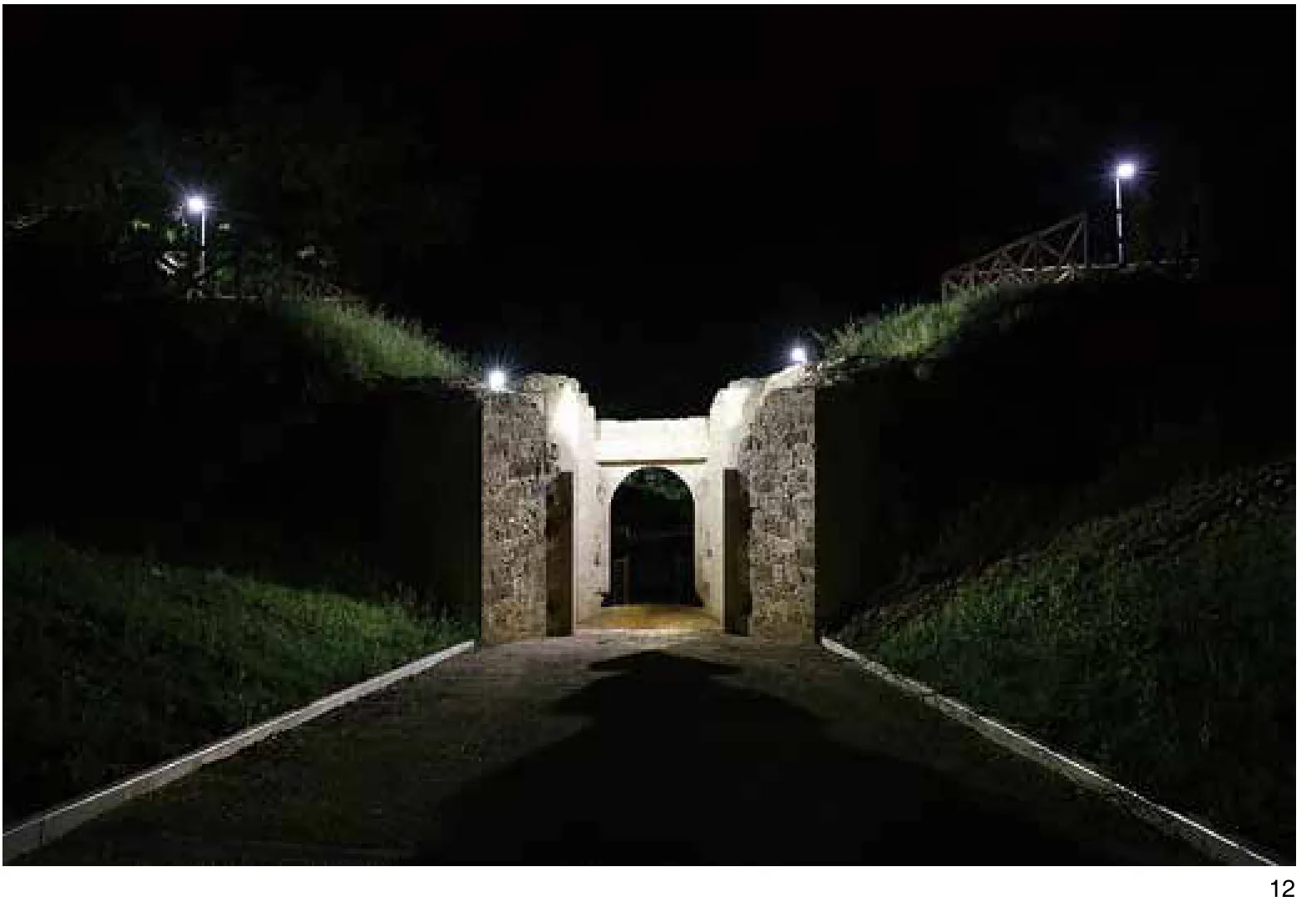
12 修复后的大门夜景图Night view of the restored gate

